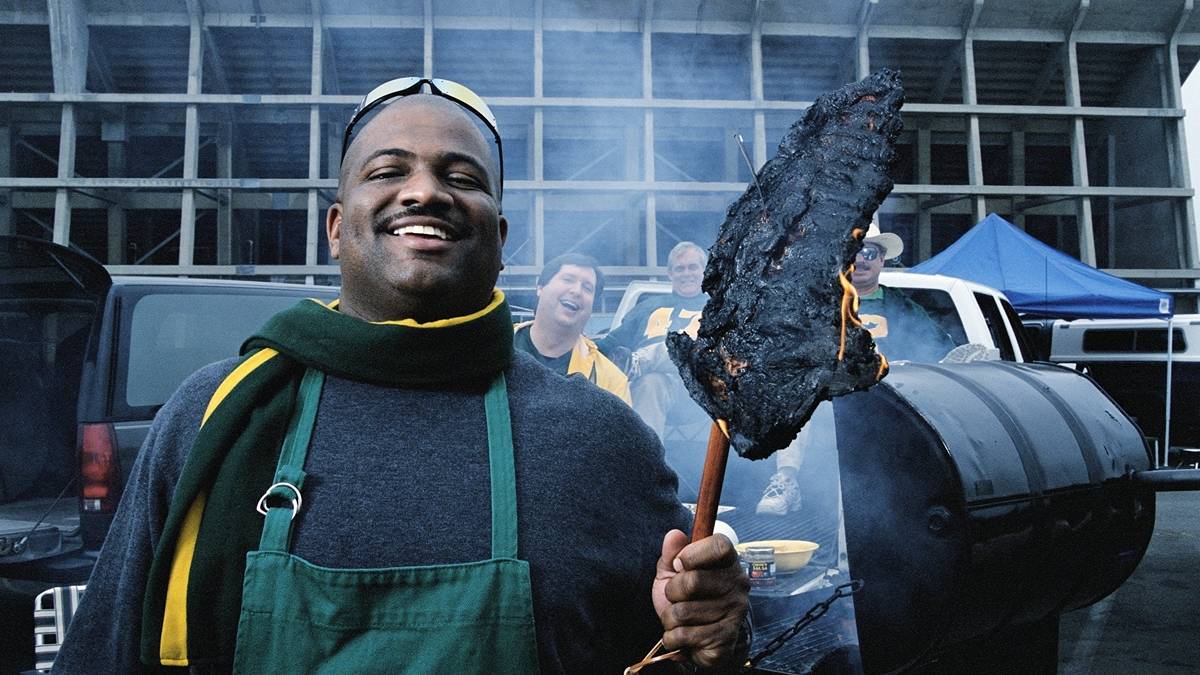Criterion: Small caps become the spring barbecue stopper

Investors have been burnt by small caps in the past, but now the sector has become quite the barbecue stopper. Pic: Getty Images
- The small caps have outperformed their larger brethren since the Reserve Bank started cutting rates in February
- Small caps remain under-owned, but sentiment is shifting
- Unlike the ASX 100 index, the sector has a minimum exposure to low growth banking and iron ore stocks
Why is every investor and their dog suddenly yapping about small caps?
The answer lies with valuations and improving momentum – and not before time.
With top-end valuations looking more stretched than a well-worn tracksuit, the minnows are winning favour as cut-price exposures to attractive sectors beyond the tired banks and bloated miners.
Montgomery Investment Management’s Roger Montgomery says small caps are at an “intriguing inflection point”.
“They’re under-owned, with investor sentiment just beginning to shift,” he says.
“For investors willing to look beyond the hype of large-cap tech and AI, small caps offer a compelling mix of value and contrarian appeal.”
The numbers don’t lie
Since the RBA’s first rate cut in February 18, the small ordinaries index has risen 16% compared with the ASX top 100’s 4% increase.
According to broker Wilsons, in early 2025 the small ordinaries index was at a 30% valuation discount to the ASX 100. This difference has shrunk to 13%, but this is still well below the small ords’ historic premium of 10%.
This “demonstrates that small cap valuations are far from overextended and still has a viable pathway to continue to re-rate,” the firm says.
Wilsons says the sector recorded “relatively better” earnings growth in the August reporting period.
At the same time, the low-growth banks and iron-ore stocks account for 38% of the ASX100, but only 1.5% of the small ords.
While no-one’s looking …
Because they fly under the radar of analysts and larger institutions, worthy small caps can remain undetected and undervalued.
That’s why medical imaging hero ProMedicus (ASX:PME) traded at a derisory valuation for years, but now is valued at $32 billion.
Due to their mandates, most of the larger funds can’t buy small caps but they must buy the big stocks for index weighting reasons.
That’s no matter whether their metrics stack up or not.
The small caps also tend to lack liquidity, which can lead to erratic price movements.
But volatility creates buying opportunities.
It’s … the vibe
Investors can play the small caps game by hugging the index with an exchange traded fund, but they’re then stuck with the duds as well as the gems.
The sector abounds with plenty of the former.
“I’m really excited about this sector. But knowing where to look and what to look for is really important, says Bell Potter senior markets analyst Grady Wulff.
She prefers small to mid-caps in “transformative” phase, such as biotechs hitting commercialisation stage.
“They are on the verge of free cash flow or profitability … and have the leg room to grow.”
Channeling The Castle’s Dennis Denuto, Marcus Today senior markets analyst Henry Jennings says it’s all about the vibe – and good management.
Humans being human, investors love a good story.
“Go with the narrative and you capture the zeitgeist,” he says.
“All [management] has to do is mention AI in a company update and it’s off to the races.”
The same applies to critical metals – another vogue sector
If they are obscure ones such as antimony or germanium, all the better.
Risks? What risks?
Montgomery says a deep US downturn could drag absolute returns lower across the board, including small caps.
“However, even in a bearish scenario, small caps might hold up better than large caps.”
The large caps, particularly in tech and AI-driven sectors, are grappling with “stretched valuations, speculative froth and even possible irrational exuberance”.
Given Australia’s stubbornly high inflation, further rate cuts probably won’t come through as quickly as expected – if at all.
“On the flip side, a short and shallow recession with aggressive rate cuts and fiscal stimulus could actually be a net positive for small caps,” Montgomery says.
Small cap of the week
Just as there are thousands of stories in New York City, there’s no dearth of worthy small cap candidates.
Wilsons likes Ridley Corporation (ASX:RIC), following the stockfeed stalwart’s “highly accretive” $300 million purchase of the Incitec Pivot fertiliser distribution business.
Meanwhile, management is improving its low-margin stockfeed business by expanding and “de-bottlenecking” its mills
With a $1.2 billion market cap, Ridley is not exactly chickenfeed.
But that highlights that ‘small caps’ are not necessarily two-bit tiddlers.
The small ords index actually refers to the top 300 stocks, excluding the top 100.
The $9.4 billion Harvey Norman Holdings (ASX:HVN) is the biggest constituent – and there’s nothing small about larger-than-life Gerry.
Related Topics
UNLOCK INSIGHTS
Discover the untold stories of emerging ASX stocks.
Daily news and expert analysis, it's free to subscribe.
By proceeding, you confirm you understand that we handle personal information in accordance with our Privacy Policy.








